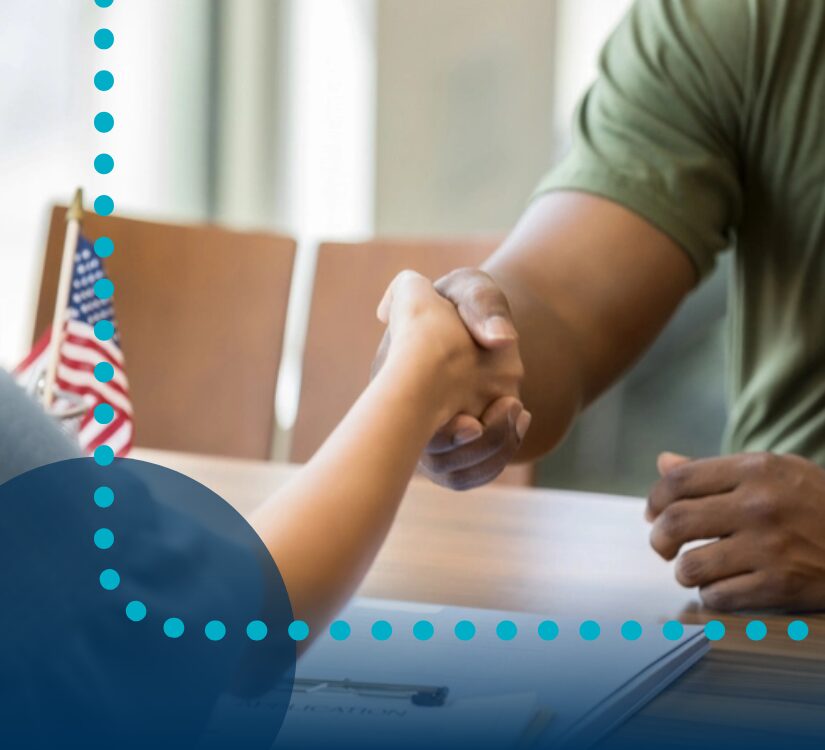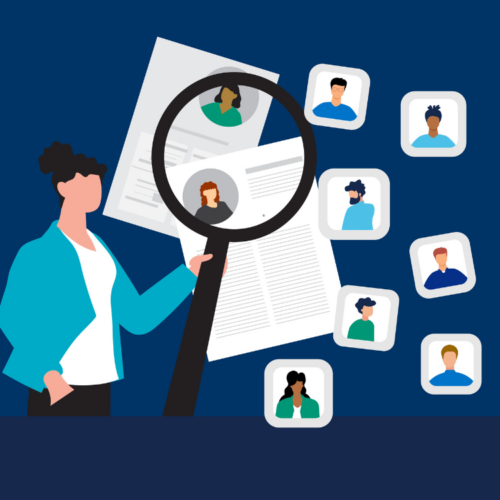
Each year, thousands of veterans re-enter the civilian workforce, ready to apply their skills, discipline and leadership to new opportunities. For many, the transition from active duty to full-time employment is one of the most important steps in building the next chapter of their lives. Veteran transition programs can help bridge this gap, offering valuable benefits to both military service members and employers.
What is a veteran transition program?
Transitioning from military life to civilian life can be an adjustment. Veteran transition programs assist with this process, helping service members who are leaving active duty as they re-acclimate to home, family, work, and everything else that comes with living outside of a military environment.
How these programs help veterans
One of the most basic ways these programs help veterans is by offering guidance and support. They also educate the veteran about the programs that are available to them as they after returning from active duty.
For instance, if a veteran is struggling with depression or post-traumatic stress disorder (PTSD), the program could connect them with mental health resources. If the veteran needs housing, schooling, or job placement assistance, the program could help find resources for these needs as well.
Veteran transition programs aren’t just for the vets either. Many provide information, assistance, and resource connections for the veteran’s family members since having their loved one return from the military is a transition or adjustment for them as well.
Benefits to employers
When a service member has an easier time returning to civilian life, it shows up in their work. They aren’t as distracted by the struggles of reacclimating to society, enabling them to focus on their job functions.
If a service member has a hard time making the transition, it can also show up in their mental health. They may battle feelings of depression, anxiety, and more. These issues can cause them to call in sick more often and negatively affect their productivity.
Veteran transition program options
Many different agencies offer transition assistance programs, sometimes referred to as TAPs. Among them are:
- VA TAP. Offered through the U.S. Department of Veterans Affairs, this is a one-day online program that helps veterans learn how to navigate their benefits. It also informs the service member of other VA services and resources available for transitioning to civilian life. This includes community integration resources, mental health resources, and insurance and disability options.
- Department of Labor TAP. This one-day program is offered through the Department of Labor and helps veterans explore career options and/or prepare for a career or general employment. In this TAP, vets gain access to information, tools, and training to help them take their desired career path. Depending on location, the veteran may also have access to one-on-one employee assistance.
- DoD TAP. The Department of Defense offers its own TAP that provides training, services, and opportunities for service members transitioning out of active duty. This program begins no later than one year before the service member’s transition begins and starts with a personal self-assessment. Once complete, pre-separation counseling commences, as does a one-day employment brief. The service member can also take an additional two days of instruction to learn more about employment, education, and entrepreneurship opportunities.
- VFW Transition & Employment Services. The VFW (Veterans of Foreign Wars) provides several resources for veterans. This includes information related to veterans’ rights, business outreach, employment, and more. The VFW also provides an extra benefit for vets who are interested in working in the skilled trades. Its Veteran Employment Tools (VET) Program provides a custom Snap-on tool kit to 20 veterans interested in starting a career as an automotive technician.
- USO Pathfinder Transition Program. The USO offers transition assistance that focuses on employment, education, financial readiness, mentorship, and increased access to benefits available to veterans in their communities. In this program, the service member works directly with transition specialists either in person or virtually to create a personalized transition plan.
- Troops Into Transportation. Veterans interested in driving truck can work with Troops Into Transportation to earn their CDL. This program is approved for vets who qualify for the GI Bill and aims to get veterans hired before they even begin their CDL training.
- The Catalyst Program. Veterans and spouses learn how to translate their experience from the military into the benefits they bring to companies. The Catalyst combines traditional in-class education, on-the-job shadowing, business training and intense networking to allow for a successful transition out of the military for Veterans and spouses.
How companies can assist with veteran transition
Companies can help employees who are returning from active duty by making sure they are aware of veteran program options. Giving veterans the contact information for each program (such as a website link or phone number) can make it easier for the vet to make the connection.
It can also be helpful to have a member of your human resources team who is knowledgeable about veteran issues, needs, and programs meet with the new veteran. A one-on-one approach lets the vet know that they are cared for by the company. It also gives them someone to reach out to if they have concerns or need additional help.
Scheduling regular sessions with the veteran to see how they are acclimating to civilian life can further strengthen the employer-employee bond. If the company offers insurance or wellness benefits that include mental health counseling, making them aware of this option also gives them a professional to turn to if they are struggling in certain areas.
At Staff Management | SMX and SIMOS Solutions, we pride ourselves on helping veterans transition to the civilian workforce and finding them meaningful jobs. Our RPS team is unique qualified to find a perfect fit for veterans in whatever role your company needs.
Learn more about our RPS solution here or get in touch with our team



